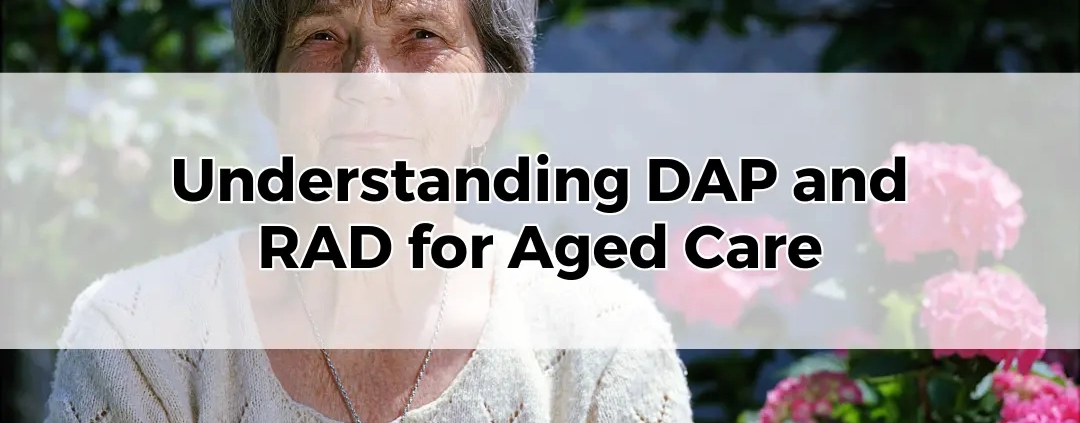Understanding DAP and RAD for Aged Care
Table of Contents
ToggleNavigating the financial landscape of aged care can be daunting. Making the right decisions is crucial for the well-being of both the resident and their family. This guide aims to demystify the concepts of RAD (Refundable Accommodation Deposit) and DAP (Daily Accommodation Payment), providing you with the knowledge needed to make informed choices.
What is RAD?
The Refundable Accommodation Deposit, commonly known as RAD, is a lump sum payment made to an aged care facility. This payment serves as a form of security, ensuring the resident’s accommodation in the facility. RAD is a pivotal element in the aged care system, offering peace of mind to both residents and their families.
Calculation of RAD
RAD amounts vary and are influenced by several factors. These include the location and quality of the aged care facility, the type of room selected, and the current market conditions. The process of determining RAD involves a comprehensive assessment by the facility, ensuring the amount reflects the true value of the accommodation provided.
Benefits of Paying RAD
Paying RAD can offer significant financial security for residents. It often results in lower daily fees compared to other payment methods. Additionally, since RAD is refundable, it can be returned to the resident or their estate, making it an attractive option for those concerned with estate planning and legacy.
Risks of RAD
However, RAD is not without its risks. The primary concern is the substantial initial outlay required, which can impact liquidity and access to other funds. Families need to carefully consider whether tying up a large sum of money in RAD is the best financial move, taking into account their overall financial situation and goals.
What is DAP?
The Daily Accommodation Payment, or DAP, is another payment method for aged care accommodation. Unlike RAD, DAP is a daily fee paid to the aged care facility. This option provides a more flexible approach, allowing residents to avoid a large upfront payment.
Calculation of DAP
DAP is calculated based on the RAD amount that would have been paid for the accommodation. Essentially, it is the interest payable on the RAD amount, calculated using a government-prescribed interest rate. This ensures that the daily payment reflects the value of the accommodation without requiring a lump sum.
Benefits of Choosing DAP
One of the primary benefits of choosing DAP is its flexibility. Residents can preserve their capital, maintaining liquidity for other investments or expenses. This payment method can be particularly advantageous for those who prefer not to deplete their savings or assets.
Risks of DAP
However, DAP also has its drawbacks. Over time, daily payments can accumulate to a significant amount, potentially surpassing the RAD equivalent. This option requires careful financial planning to ensure it remains a viable long-term solution.
Combining RAD and DAP
For those seeking a balanced approach, combining RAD and DAP can be an effective solution. By paying a portion of the RAD upfront and the rest through daily payments, residents can tailor their financial commitment to better suit their individual needs and circumstances.
Comparing RAD and DAP
Understanding the key differences between RAD and DAP is essential for making informed decisions. While RAD provides long-term security and potential estate benefits, DAP offers greater flexibility and liquidity. Each option carries distinct financial implications, and the best choice will depend on personal financial situations and preferences.
Conclusion
In conclusion, understanding the intricacies of RAD and DAP is crucial for anyone navigating the aged care system. By carefully weighing the benefits and risks of each option, families can make well-informed decisions that best serve their financial and personal needs.









